Public records show students struggling across SE Wisconsin
MILWAUKEE - For students struggling through the last year of pandemic learning, GPA is not just a number.
"Before we got kicked out of school, my grades was top-notch," said Maleak Taylor, a Milwaukee Public Schools 11th grade student. His eyes were smiling behind his mask as he logged into his virtual classes.
"After this?" Maleak’s eyes dropped. "I try to keep my grades up, but my grades fell dramatically. And I’m just trying to keep it up there where I can graduate this year."
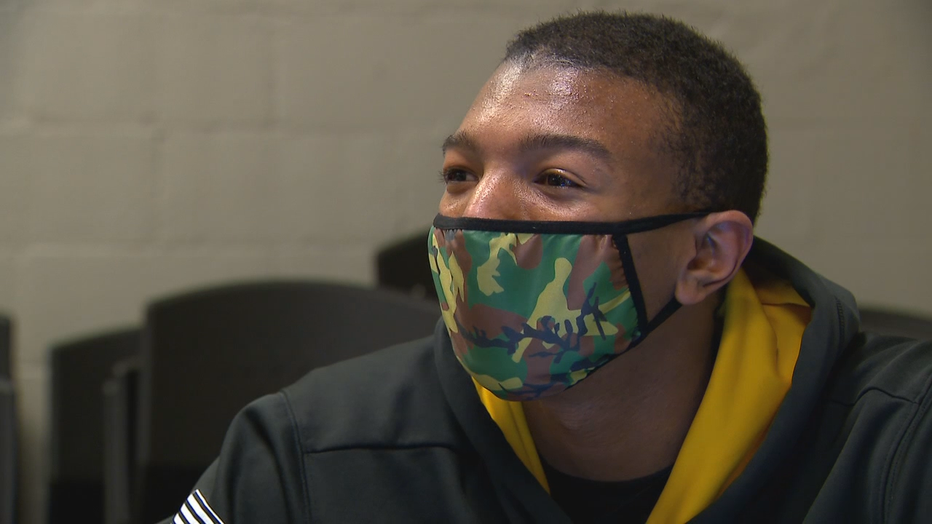
Maleak Taylor
By this point, Maleak’s story is a familiar one; through the pandemic, student academic performance across Wisconsin and across the country has been suffering.
But public records from the ten largest school districts in southeast Wisconsin, along with interviews with students, parents, teachers, district administrators, and researchers, reveal a more detailed picture about how and why students in different districts that made different decisions are experiencing a similar trend: Dropping grades and a rising rate of class failures.
The public records
FOX6 requested student performance data from Kenosha Unified School District, Milwaukee Public Schools, Oak Creek-Franklin Joint School District, Oconomowoc Area School District, Racine Unified School District, Sheboygan Area School District, Waukesha School District, Wauwatosa School District, West Allis-West Milwaukee School District, and West Bend School District.
The records show, to varying extents, student grades in the first semester of the 2020-2021 school year taking a hit in all ten districts, even the ones that offered fully in-person learning options early on in the semester.
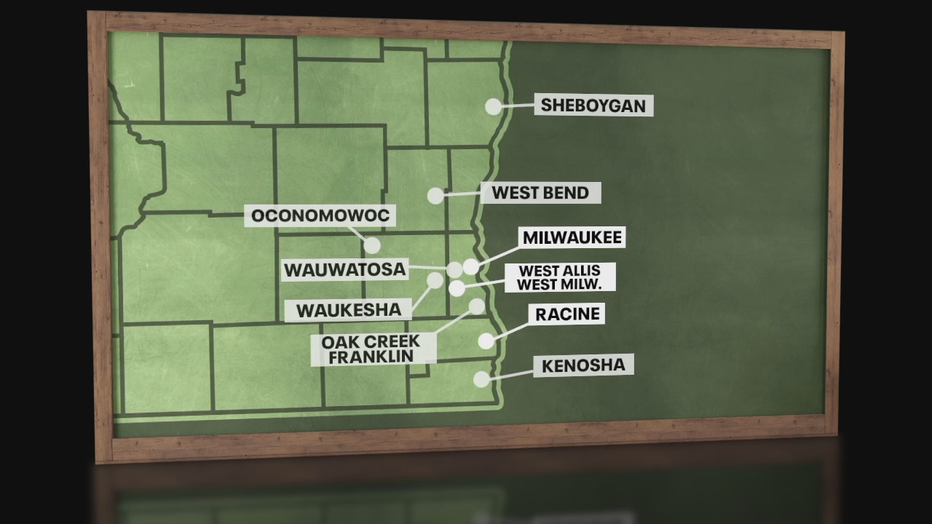
Grades are not the only way to measure student learning, and researchers caution against comparing them across locations because different educators grade in different ways, and different districts track the data in different ways. Some broke the numbers down by school building, while others were only available district-wide; some included middle school in their responsive records, while others only included high school; a few districts only had records available by school year, while others had specific quarter and semester grades.
"It's a snapshot in time," Sheboygan superintendent Seth Harvatine said, pointing out that some students have since converted last semester's class fails into passing grades through the process of unit recovery.
Interactive map
Click on the icons below to see a brief synopsis of what public records reveal about student performance in each of southeast Wisconsin's ten largest school districts through the pandemic.
But with the pandemic suspending several of the typical standardized testing methods, Wisconsin Center for Education Research scientist Dr. Bradley Carl says it can be useful to examine changes in student GPA and class failure rates.
"I think some grace and patience and understanding is warranted," Dr. Carl said. "And then I do think also that it is fair to raise questions about, ‘Have we had the right level of urgency in balancing public health against student interests? And have we had the right sense, an appropriate sense of urgency getting kids back into school as quickly as we can?’"
"Those are fair questions and there are no easy answers to them," Dr. Carl added.
FOX6 asked administrators from all ten school districts to answer questions about student performance on camera. Kenosha, Racine, Waukesha, West Allis-West Milwaukee, and West Bend answered questions right away. The Oak Creek-Franklin, Oconomowoc, and Sheboygan superintendents initially declined to do interviews but changed their minds after FOX6 asked them for comment in-person at school board meetings.
It was more difficult to get answers from Wauwatosa and MPS (more on that later).
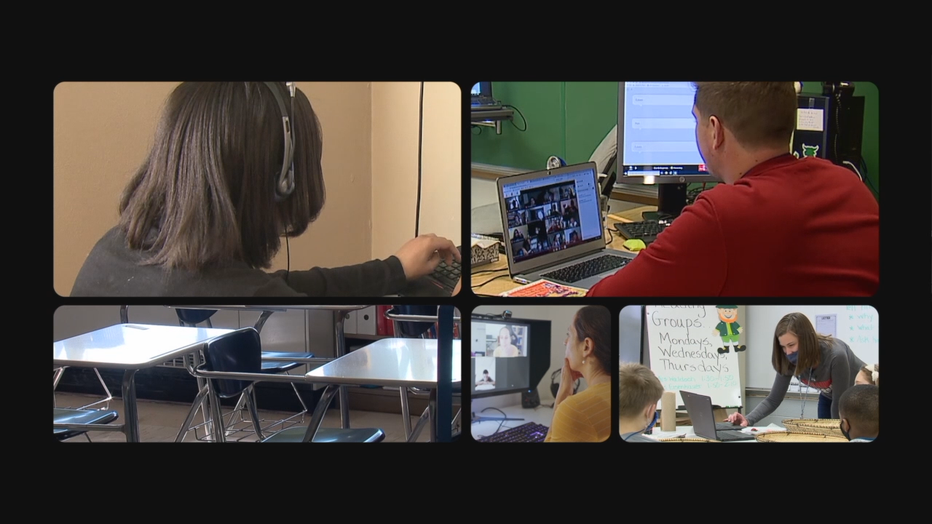
"Do no harm"
While the public records show a widespread trend of grades dropping in fall 2020, they also show grades improved in several districts during spring 2020 - when the pandemic hit and school buildings across the state closed for the remainder of the year.
Sheboygan, Kenosha, Racine, and Wauwatosa saw average GPA improve when students were sent home; in Waukesha, it held steady. The following semester, those districts saw average GPA noticeably decline.
Sheboygan, Racine, Wauwatosa, MPS, West Allis-West Milwaukee, West Bend all saw the percentage of students failing one or more classes plummet during spring 2020, only to spike the following semester.
"We all just stopped doing work because our teachers told us that it didn’t affect our grades either way unless they were getting better," Waukesha North High School freshman Allison Wadd said.
"Teachers would assign optional work and no one would do it anyways," Kenosha Unified School District sophomore Emma Meadows said. "And basically school was over for the rest of the school year."
Wauwatosa’s records show, out of 3,680 students in its middle and high school buildings, only one student failed any class in the second semester of the 2019-2020 school year.
"Unofficially or officially, I think the message in the spring was, ‘Let’s do no harm,’" Dr. Carl said.
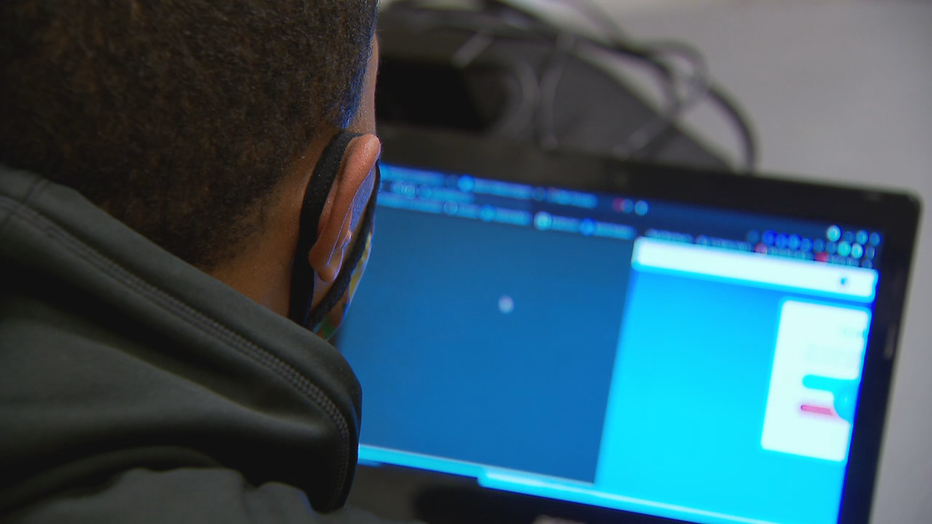
When the pandemic hit, Kenosha administrators say they did not penalize students who stopped participating. West Allis-West Milwaukee, Waukesha, and Racine said grades could not get any worse than they were before buildings closed.
"We had to take into consideration they couldn’t email these things to us," Racine Unified School District Executive Director of Curriculum and Instruction Janell Decker said. "Some people don’t have transportation; it’s an equity issue."
"We have a lot of students who rely on their GPA for scholarships and college and things like that," West Allis-West Milwaukee Director of Leadership and Learning Deidre Roemer said. "And so we didn’t want to do anything that would jeopardize any of those opportunities for our learners."
"Did that allow some students to perhaps hit the cruise control button?" Waukesha Superintendent Dr. Jim Sebert asked. "Absolutely, I’m sure that it did. That certainly was not the goal."
School districts re-adjusted their grading systems again in the fall. Kenosha Unified School District Chief Information Officer Kris Keckler points out a teacher might have 25 students in a class, five of whom did not do any work between March and September, ten of whom struggled with mastering the material through online learning, and ten students who did fine the previous semester.
After what was, for some, a six-month learning pause, students were expected to jump back in. This time, grades could get worse - and they did.
"All of a sudden, our teachers started assigning a lot more work," Oak Creek-Franklin sophomore Abby Heiges said.
"I felt like there was nothing I could do and there was nothing I could hold onto to get my grades back or at least feel stable in school," Waukesha freshman Allison Wadd said.
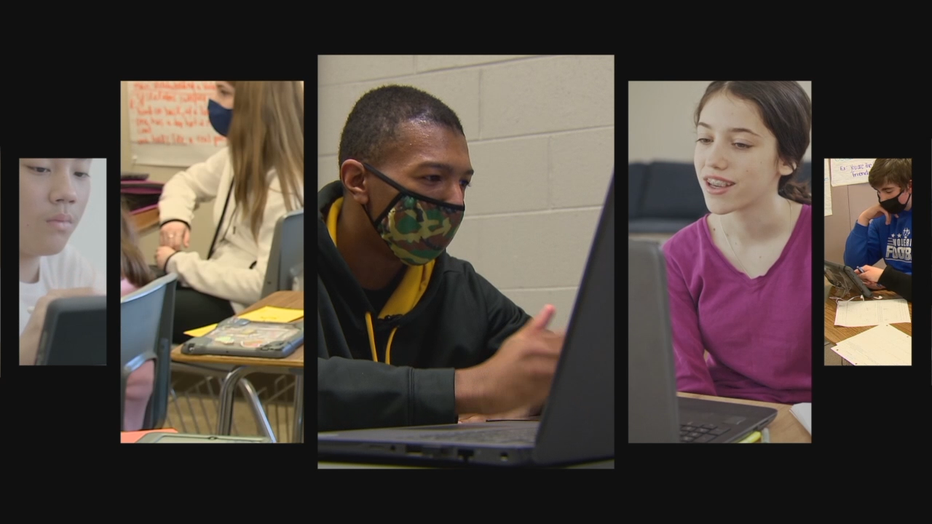
"We probably could have started five days, maybe we would have had to pull back and do some hybrid during that period and then come back to five days, a little bit earlier," Waukesha superintendent Dr. Jim Sebert said, when asked if he would do anything differently.
"But that’s easy to say now that we’ve been through it, right?" he added.
"Could we have come back a little bit earlier than we did face-to-face in the fall?" Oconomowoc superintendent Dr. Roger Rindo asked. "I think so, to be very honest with you. Knowing what we know now, certainly. Everybody’s a rocket scientist in retrospect but we didn’t know what we didn’t know."
More to the story
Districts that enacted different grading policies in the spring still saw grades take a hit in the fall.
MPS Superintendent Dr. Keith Posley says the district went to a pass/fail model in the second semester of the 2019-2020 school year, and resumed regular grading the following year.
Oconomowoc, West Bend, and Sheboygan gave students the option of continuing to earn a letter grade or moving to a pass/fail model.
"I think we had some students work really, really hard and wanted to take the grade that they earned and so we wanted to allow and honor that," Oconomowoc superintendent Dr. Roger Rindo said. "And we had some students who struggled legitimately and tried really hard but struggled in that new environment and we wanted to honor and respect that as well."
"Throughout everything, we’ve tried to preserve and protect choice for our families and our students," West Bend superintendent Jennifer Wimmer said.
Oak Creek-Franklin’s superintendent says the district did not change grading policies last spring.
"So I think you see a fairly accurate representation of what’s taking place," Daniel Unertl said. "But that gives us a good starting point for what we have to do, right? No one has a distorted view of what level of intervention needs to take place."
But the above districts still saw an uptick in students failing classes in the fall.
Parents and students offer last semester’s rapid shifts between virtual, hybrid, and fully in-person learning as an additional explanation for dropping grades.
Oak Creek-Franklin was hybrid for only a few weeks before returning to a virtual model; Sheboygan also went back and forth.
"We once found out on a Sunday night at 9:00 that starting immediately the next morning, everybody was going to be forced into this virtual environment for the next week," KUSD parent Eric Meadows said.
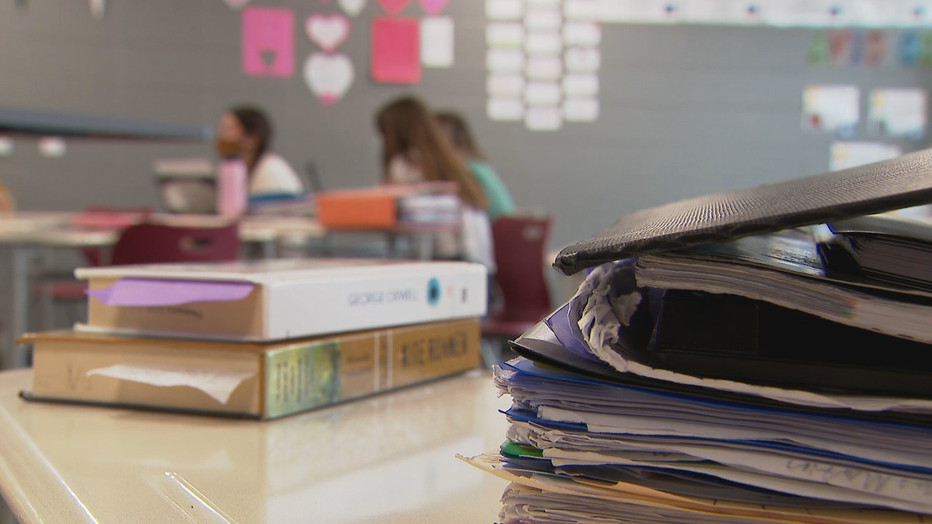
"Half the school would be in person, the other half would be online," Waukesha freshman Allison Wadd said. "And they would try to get you to have conversations with each other. And it would be very difficult to start the conversation about the lesson when half the time you couldn’t hear the teacher when they were speaking to the class that was in person."
"So you‘re here some days and you’re not here some days," Waukesha South instructional coach Alyssa Behrendt said. "Some weeks we had to go completely virtual because of an outbreak. And then bringing back face-to-face -- I think some of that, kids were getting lost again in trying to figure that out."
Oconomowoc saw the smallest increase in failure rates and decrease in GPA; the superintendent says there was an aggressive effort early on to identify students who were struggling by face and by name, so intervention could happen quickly. The district also moved to fully in-person learning relatively early last fall.
"We weren’t seeing the shocking and glaring decreases in academic performance that others were seeing," Dr. Roger Rindo said.
But West Bend offered a fully in-person option for families from the start of the fall semester and still saw a jump from 15.53 percent of students failing one or more classes in the first semester of the 2019-2020 school year to 23.8 percent in the first semester of 2020-2021.
"Perhaps they were selecting in person, but they’ve been subject to quarantine three times and they’ve been in and out," superintendent Jennifer Wimmer said. "So that uncertainty is still taking a toll on our students."
"So while I agree that having students be face-to-face, five days a week is the most supportive, I can’t promise that we would see a big difference if we had been open the whole time, a big difference in GPA," Racine Unified School District Executive Director of Curriculum and Instruction Jannell Decker said. "They’re going through a lot of stress and trauma as a family, as individuals, just having to lead a different life out in the community now."
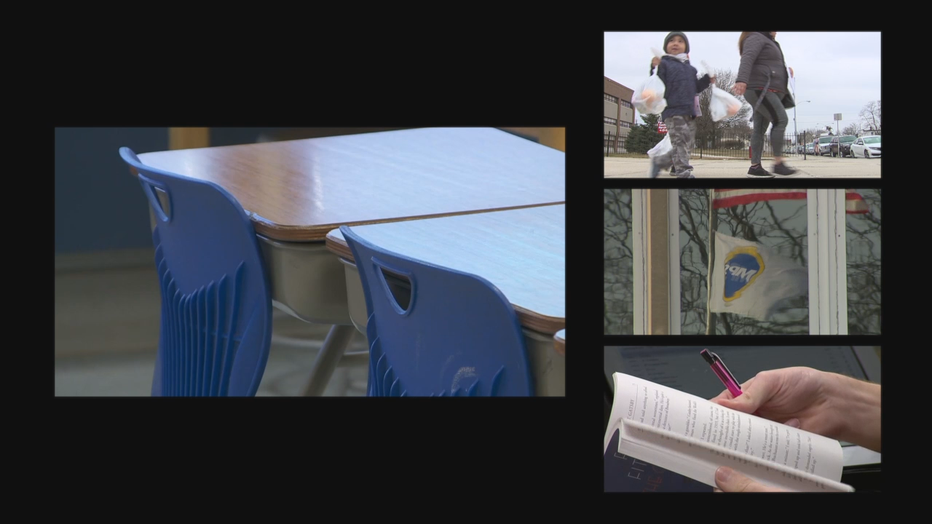
The struggle behind the screen
While the districts that stayed virtual all last semester had more consistency, their numbers also show a decline in student academic performance. Administrators, teachers, parents, and students say the sudden shift to virtual learning was difficult for large portions of the student population.
Part of that difficulty came from the initial struggle for resources.
"Knowing we did not have the devices, we were not one-on-one equipped [in March 2020], and not all our families had internet access, our plan had to be paper-based," Racine Unified School District Executive Director of Curriculum and Instruction Jannell Decker said.
"We didn’t get the packets until maybe April," RUSD senior Hailey Mattek said.
"The children didn’t get Chromebooks, it had to be six to seven weeks," MPS parent Adija Greer Smith said.
"Orders we had placed last May, early May, we finally got the last shipments of those last week," Kenosha Unified School District Chief Information Officer Kris Keckler said in a March 2021 interview.
But parents and students say for many, the virtual platform itself was problematic.
"I think he got so comfortable learning this way, he didn’t continue to give the effort," Greer Smith said of her son.
"Although virtual may seem easy, it’s really not," West Allis Central High School freshman Izabella Barrera said. "It’s very draining."
"Because we’re not in the classroom to learn how to mix all of these different potions and everything," MPS junior Maleak Taylor said.
MPS and Wauwatosa
FOX6 started asking Milwaukee Public Schools for student performance records in January. The records the district eventually provided say the data was collected in February, but MPS did not turn the numbers over until April 1 - the night before spring break, one week after the school board voted on an in-person learning plan.
The data shows a jump in high school students failing one or more classes, from 46 percent pre-pandemic to 55.9 percent last semester.
The district said it could not locate records with GPA data from previous years; no one responded to FOX6’s repeated interview requests.
During a virtual press conference about reopening school buildings, Superintendent Dr. Keith Posley briefly answered a few FOX6 questions about the student performance data.
"I will say to you that this has been something that has happened around the country and I think that it’s been due to the shift to virtual learning and trying to meet the needs of all of our students," Dr. Posley said. "That is something that we do have to address as a district."
Wauwatosa’s records show a jump from 9.22% of middle and high school students failing one or more classes in the first semester of the 2019-2020 school year to 17.46% in the first semester of 2020-2021. Average GPA fell from 3.02 to 2.83.
For nearly one month, FOX6 repeatedly requested an interview with superintendent Dr. Phillip Ertl; district spokesperson Sarah Frittitta declined on his behalf. FOX6 then emailed school board president Dr. Eric Jessup-Anger; he did not answer questions, either.
"I'm happy to do interviews by catching up with administration/board members on the spot at public meetings," FOX6 Investigator Amanda St. Hilaire emailed. "But I much prefer to schedule something at a mutually-agreed upon time so the interview can be more productive."
No one responded.
When St. Hilaire approached Jessup-Anger at a recent board meeting, he would not answer questions.
Jessup-Anger: I’ve got a meeting that starts literally in five minutes.
St. Hilaire: Can we catch you right after?
Jessup Anger: I can’t guarantee that.
When the meeting was over three hours later, Jessup-Anger still declined to answer questions.
Jessup-Anger: So I haven’t seen the data that you’re referring to and without having it in front of me I can’t comment on that.
St. Hilaire: So you’re on the board and the superintendent hasn’t shared that data?
Jessup-Anger: You’re asking me at 10:00 and you’re referring to data that I haven’t seen and I’m not going to comment on data that I don’t have in front of me and haven’t had a chance specifically to be able to answer questions on.
St. Hilaire: We’re trying to give the data some context and that’s why we’ve been requesting an on-camera interview with someone from the district for about a month. And I’m not really sure what the resistance is --
Jessup-Anger: No resistance. I don’t have any resistance. But it’s difficult certainly to be walking into a meeting tonight not having awareness that you were going to be here to talk.
St. Hilaire: Well, I said I was going to be here. When I emailed you I said, ‘I’m happy to catch up at the next board meeting but I’d rather set up an interview time.’ And no one would set up an interview time, you or the superintendent.
Jessup-Anger: What I’m going to say is 10:00 probably is not the best productive time for any conversation when I haven’t seen any of the specific data you’re referring to.
St. Hilaire: So will someone from the district go on camera and answer our questions about this?
Jessup-Anger: At this point what you’re asking is you’re asking for some specific data and what we can probably do at the very least is provide a written statement.
St. Hilaire: I have the data, I want to give it context though. So for example, why -
Jessup-Anger: I’m going to wish you my very best tonight. I’m going to head home. It’s pretty late. And we’ll be in touch tomorrow.
St. Hilaire: Look, I’m nine months pregnant. This isn’t my idea of a good time either, but we’re trying to get some answers for families here.
(Jessup-Anger walks away)
The next day, the district’s spokesperson again denied a request for someone to answer questions on camera about student performance and the school district’s response.
Beyond the numbers
The administrators, students, parents, and educators who talked to FOX6 also discussed how school districts are working to catch students up, concerns about mental health, teacher burnout, the expansion of future virtual school options, and the difficulty parents had when it came to getting information about their children’s academic performance.
Watch FOX6 News at 9 and stay with fox6now.com all week for these stories as southeast Wisconsin continues to grapple with the fallout of pandemic learning loss.
"Everybody knows we have our work cut out for us," Oak Creek-Franklin superintendent Daniel Unertl said.
FOX6 investigates "Learning Loss"
- Part 2: Students are struggling: Here is what WI schools are doing about it
- Part 3: ‘Stranded:’ Honest conversation with WI students about mental health
- Part 4: Wisconsin schools look to continue, expand future virtual options
- Part 5: So you want information about your child’s school; got $500?

